Asthma and Humidity: How to Create a Healthier Home Environment for Immunocompromised People
- Denrie Perez

When your home suffers from high humidity, your health may be the first to suffer.
Humid indoor environments can be a silent trigger for respiratory issues, worsening symptoms and putting already vulnerable people at greater risk.
For those living with asthma or compromised immune systems, exposure to excess moisture in the air can lead to frequent flare-ups, increased sensitivity to allergens, and a higher risk of infection from mold and other airborne irritants.
In this article, we’ll explore how humidity affects respiratory health and how tools like the XDRIER dehumidifier can help protect your space.
Whether you’re managing a chronic condition or simply trying to create a healthier home, understanding indoor humidity is a key step toward better breathing and peace of mind.
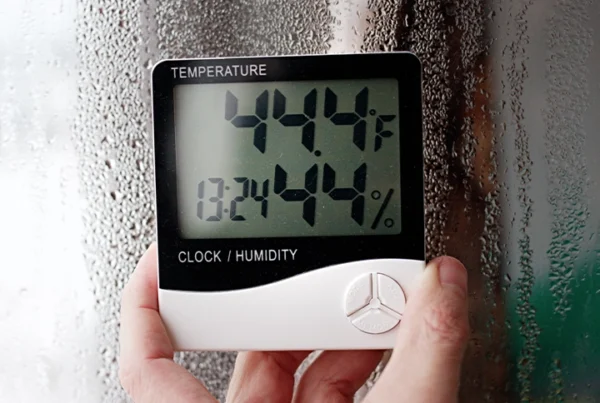
The Link Between Humidity and Respiratory Health
Humidity plays a major role in indoor air quality. When levels rise above the ideal ranges of 50% to 60%, moisture creates an ideal breeding ground for mold, mildew, and dust mites—all of which can irritate the lungs and trigger asthma attacks.
When the air is heavy and damp, it makes breathing more difficult, especially for those with chronic respiratory issues like asthma or COPD. This can make the effects more pronounced and even dangerous.
For immunocompromised individuals, these airborne irritants are more than just a nuisance. They pose real health threats. Bacteria and viruses also tend to linger longer in moist environments, increasing the risk of infection.
Controlling indoor humidity isn’t only about comfort: it’s about creating a safe and breathable environment. By addressing high humidity, you can reduce the presence of airborne pathogens, limit mold growth, and protect those most vulnerable.
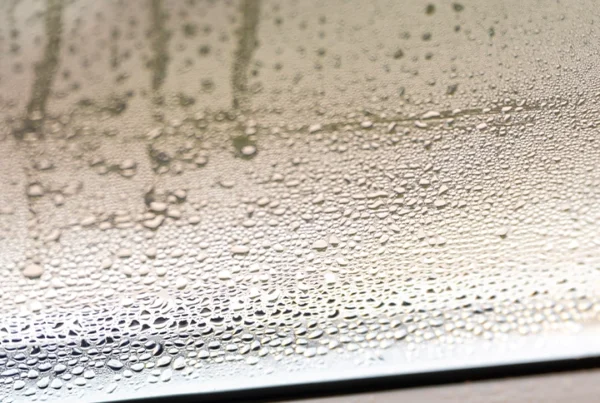
Signs Your Home Has High Humidity
Worried your home might be harboring excess moisture? High humidity can sneak in quietly but leave a big impact on your comfort and health.
Here are some red flags to look out for:

Condensation on windows and mirrors
If your windows are constantly fogging up or you notice water droplets forming on glass surfaces, it’s a strong indicator that your indoor humidity is too high.
This condensation occurs when moist air comes into contact with cooler surfaces, causing water to collect—often around window panes, mirrors, or even metal fixtures. It also indicates that airborne moisture levels are high throughout your home, which can trigger asthma and worsen air quality over time.

Persistent musty or damp odors
That stubborn “basement smell” or a lingering musty scent in certain rooms is a classic sign of trapped moisture. These odors are often caused by mold or mildew growing in places you can’t see due to consistent humidity.
The danger here is that you’re not just smelling mold; you’re inhaling it. Mold spores in the air can irritate the respiratory system, particularly in those with asthma, allergies, or weakened immune systems. If the smell persists even after cleaning, it’s time to take steps to reduce moisture at the source.
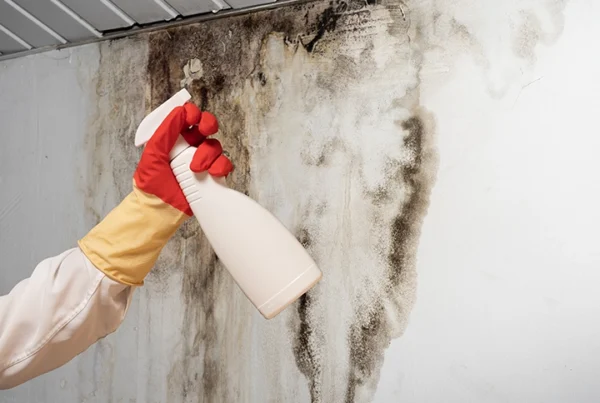
Mold or mildew spots
Visible mold growth—those black, green, or white spots you may find on walls, ceilings, or grout—is a surefire sign your humidity is out of control. Mold thrives in warm, damp environments and spreads quickly when not addressed.
Even small amounts of mold can trigger asthma symptoms or allergic reactions. For immunocompromised individuals, exposure can lead to more serious infections. Mold is more than an aesthetic issue, it’s a red flag that your indoor environment needs urgent attention.
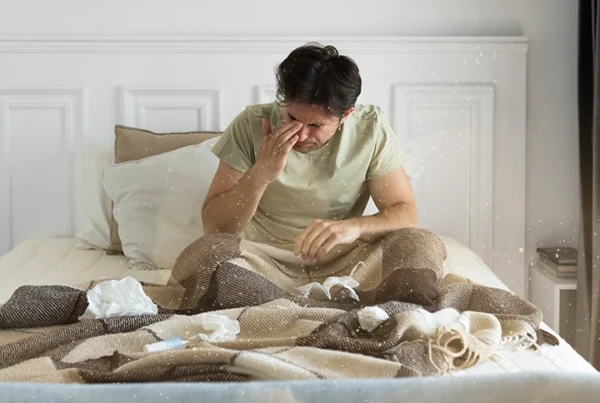
Sticky or clammy indoor air
When your home still feels muggy despite air conditioning, high humidity is likely to blame. Your AC can cool the air, but it doesn’t always remove enough moisture, especially if your system isn’t optimized for dehumidification.
This sticky feeling can make your skin feel damp and uncomfortable, and it often comes with a sense of heaviness in the air. It’s not just unpleasant—it can also interfere with sleep and worsen respiratory symptoms over time.
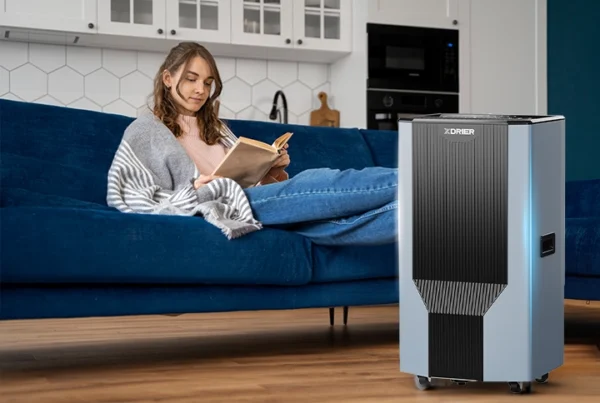
How to Control Humidity and Improve Indoor Air Quality
Maintaining healthy humidity levels isn’t just about comfort—it’s about protecting your health, your home, and the people you care about.
Here are proven steps you can take to manage moisture and keep the air in your home cleaner and safer for everyone.

Seal air leaks in windows, doors, and basements
Unsealed windows, gaps in door frames, or cracks in basements can allow humid air to seep into your home. This can undermine your efforts to maintain balanced humidity levels and increase your energy costs as your HVAC system works harder to compensate.
Inspect your home for drafts or leaks to prevent moisture from further entering your home. Use caulking, weatherstripping, or insulation to close any trouble spots. This helps your dehumidifier and ventilation systems work more efficiently, protecting your home against mold, mildew, and respiratory irritants.

Change HVAC filters regularly and schedule maintenance
Your HVAC system plays a crucial role in controlling both temperature and humidity. But if it’s clogged with dust or mold, it can actually circulate pollutants and allergens throughout your home.
Replace air filters every 1 to 3 months, depending on your home’s needs and whether you have pets or sensitive individuals in the household. Schedule professional maintenance at least once a year to ensure everything is running efficiently. A well-maintained HVAC system supports both humidity control and indoor air quality.

Install a dehumidifier in your home
A dehumidifier works continuously to pull moisture out of the air and maintain healthy humidity levels. It’s particularly valuable in spaces prone to dampness, such as basements or open living areas.
By investing in a high-capacity, smart dehumidifier like XDRIER, you can target excess humidity directly and consistently. Unlike temporary fixes, a quality dehumidifier offers long-term control with minimal maintenance. It’s one of the best ways to ensure clean, breathable air for everyone in your household.

How XDRIER Supports a Healthier Home
XDRIER is more than a dehumidifier—it’s a smart solution for families who prioritize health and safety.
Designed to cover large areas from 1,500 to 2,600 sq. ft., XDRIER ensures that every corner of your home stays within the optimal humidity range. With its intuitive smart control panel, you can monitor and adjust humidity levels in real-time.
It operates quietly and efficiently, making it perfect for bedrooms, nurseries, and living areas. And because it’s engineered for performance and reliability, XDRIER gives you peace of mind, especially if someone in your household is at higher risk due to asthma or a compromised immune system.

Conclusion
High humidity doesn’t just make your home feel uncomfortable—it can also jeopardize your health.
By understanding the risks and taking simple steps to manage moisture, you can create a cleaner, safer living environment for everyone, especially those who need it most.
With XDRIER, you’re not just reducing humidity: you’re taking a proactive step toward better breathing, better living, and better health.
Explore our range of smart, high-capacity dehumidifiers and breathe easier starting today.
